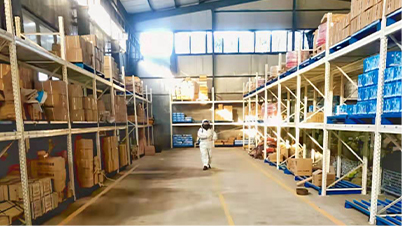fixed gantry crane
Understanding the Fixed Gantry Crane A Key Component in Modern Industry
In the world of industrial operations, efficiency and safety are paramount. Among the numerous tools that help achieve these goals, the fixed gantry crane stands out as a significant technological advancement. This type of crane is specifically designed for heavy lifting, providing structural support and stability in various industrial settings, including shipyards, warehouses, and construction sites.
A fixed gantry crane consists of a bridge that spans a workspace and is supported by two or more legs on fixed tracks. This design allows for the lifting and moving of heavy materials and equipment with relative ease. Unlike mobile cranes, which can be moved from one job site to another, fixed gantry cranes are stationary, making them particularly suitable for operations that require frequent lifting of heavy loads in a specific area.
One of the main advantages of fixed gantry cranes is their ability to handle large loads with precision. These cranes are engineered to lift varying weights, often exceeding several tons, and can be equipped with various attachments depending on the specific needs of the operation. This versatility makes them indispensable in environments that require the frequent handling of ship hulls, storage containers, or heavy machinery components.
Moreover, fixed gantry cranes contribute to improved workplace safety. By offering a stable and secure means of lifting, these cranes minimize the risk of accidents associated with manual lifting or the use of less stable equipment. Operators can move loads at a safe height, reducing the chances of injury and making the entire lifting process more efficient. Incorporating advanced features like anti-collision systems, load sensing devices, and remote controls further enhances the safety of operations involving fixed gantry cranes.
fixed gantry crane

The efficiency offered by fixed gantry cranes is also noteworthy. Their design allows for maximum utilization of space, as they can operate close to walls or other structures without losing functionality. This efficient use of space is vital in crowded industrial settings where every square meter counts. Additionally, fixed gantry cranes can be operated faster than mobile cranes due to their stationary nature, which means that the productivity of a facility can significantly increase.
In recent years, technological advancements have further enhanced the capabilities of fixed gantry cranes. Incorporating automation technologies has become increasingly common, allowing for more efficient operations with reduced labor costs. Automated gantry cranes can be programmed to perform repetitive tasks, minimizing human error and increasing output. This shift towards automation reflects broader trends in the industrial sector, where efficiency and precision are increasingly critical.
Despite their many benefits, the deployment of fixed gantry cranes requires careful planning and consideration. Operators must conduct thorough assessments of the site to determine the appropriate crane size and configuration. Proper training for operators is essential to ensure that they are well-versed in the operational protocols and safety measures associated with using these powerful machines.
In conclusion, fixed gantry cranes play a vital role in modern industrial operations. Their ability to lift heavy loads safely and efficiently, coupled with advancements in technology, ensures their continued relevance in various sectors. As industries evolve and demands increase, fixed gantry cranes are set to remain a key component in the machinery used to keep operations running smoothly. Embracing the advantages offered by these cranes can lead to improved productivity, enhanced safety, and a more effective approach to managing heavy materials in industrial environments.
-
Unlock Seamless Relocation with Our Heavy Equipment Moving ExpertiseNewsJun.06,2025
-
Unleash Unrivaled Flexibility with Our Adjustable Gantry CraneNewsJun.06,2025
-
Unleash Heavy-Duty Efficiency with Our Industrial Gantry Crane SolutionsNewsJun.06,2025
-
Revolutionize Steel Handling with Our Magnetic Lifter RangeNewsJun.06,2025
-
Master Equipment Mobility with Premium Machinery Mover SolutionsNewsJun.06,2025
-
Elevate Your Material Handling with Magnetic Lifter TechnologyNewsJun.06,2025
-
YS Permanent Lifting Magnets: The Smarter Way to Handle SteelNewsMay.22,2025
